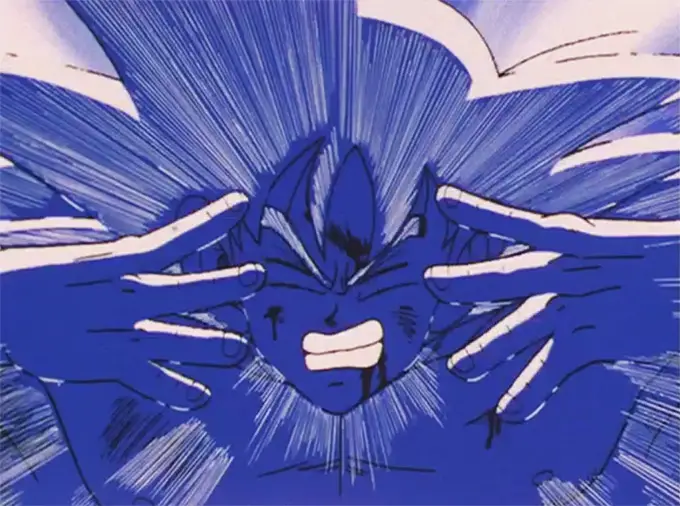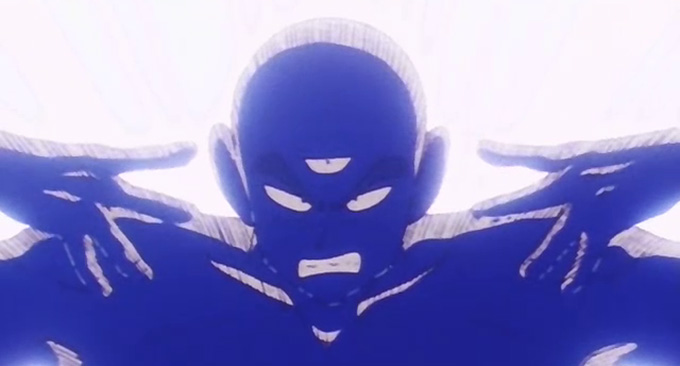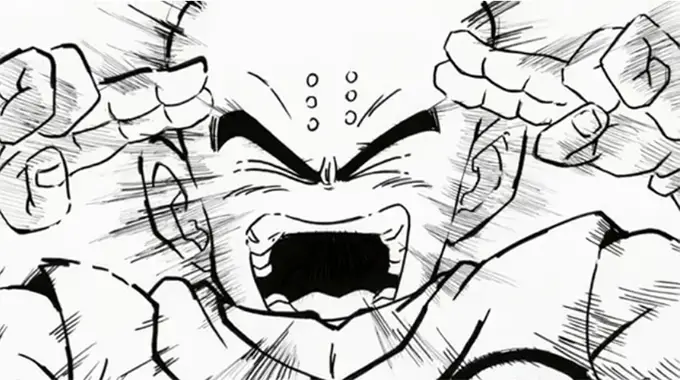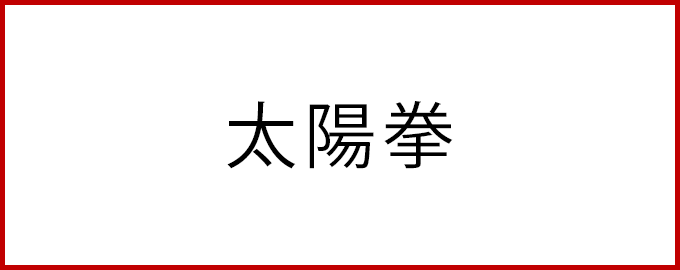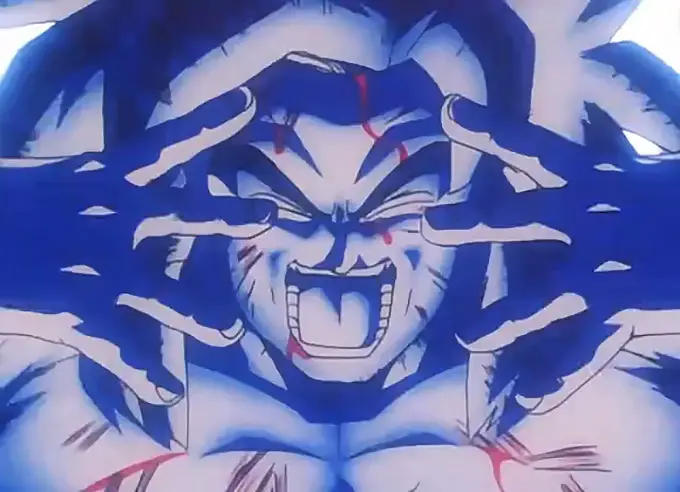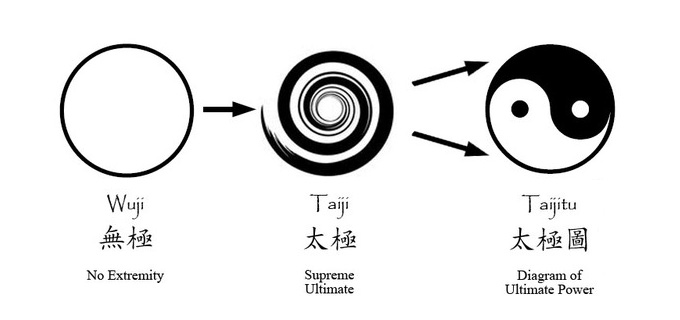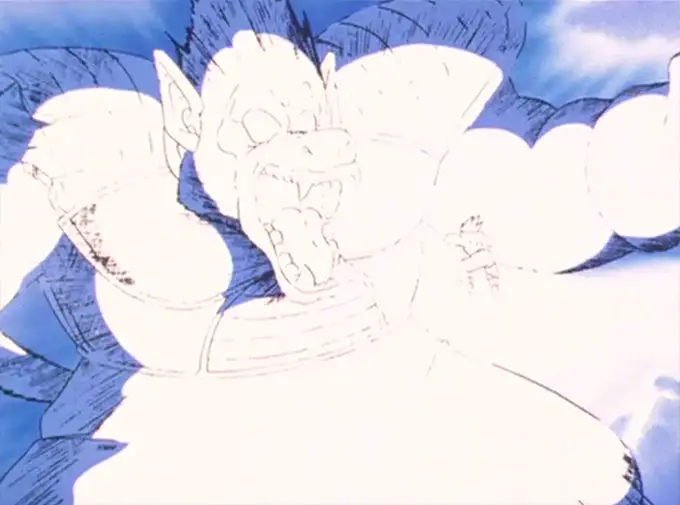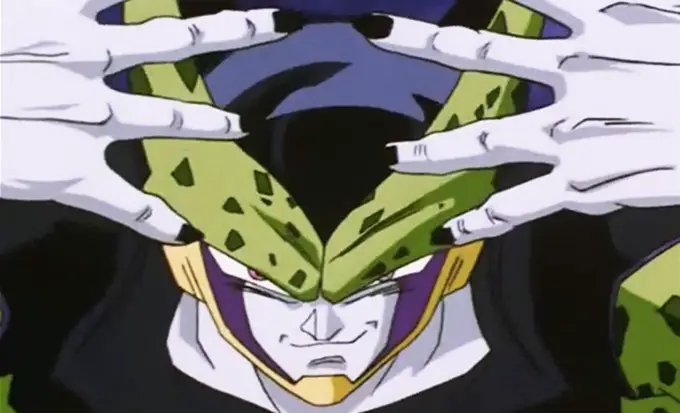Taiyo-ken Explained
The Taiyō-ken is a non-lethal attack used throughout the entire Dragon Ball series, but do you know how the attack works or what it means?
What is the Taiyo-ken?
The taiyō-ken (English: Solar Flare) is a non-lethal ki based attack that emits concentrated ki from the practitioner’s body in the form of white light. The technique is used like a flash grenade to temporarily blind the opponent.
It works by flooding all of the light sensitive cells in the eyes and making vision impossible.
The taiyō-ken is an effective technique in buying time to run away from a physically stronger opponent.
To use the taiyō-ken the practitioner raises both of their hands to the side of their face and spreads all four fingers open with the palms facing inward. The thumb is also extended but stays inside the palm. They then emit the light from their bodies and it spreads out in all directions, as if their bodies are turned into a small sun.
The light can travel sizeable distances, but the closer they are to their opponents’ eyes, the more effective.
The technique was first used by Tenshinhan in the 22nd Tenkaichi Budokai against Jackie Chun. It was later used by Goku, Krillin, and then Cell.
http://youtu.be/o5Yf3WuJdts
There is no effective counter to the taiyō-ken except to wear sunglasses. Even if the people nearby close their eyes, the intense flash of light still dazzles the optic nerves.
This can be seen on Planet Namek when Krillin uses the technique against Dodoria and tells Gohan to look away. Even after the attack was over, Gohan was still dazzled.
Here Krillin uses a variation of the taiyō-ken’s hand technique where he points his fingers at his forehead. This was only seen once.
Now what does the name “taiyō-ken” mean, and where does it originate?
The Etymology of Taiyo-ken
The characters for taiyō-ken are written in kanji as 太陽拳 and are inherited from Chinese hanzi, so they have layered meanings.
Tai (太) means great, supreme, extreme, ultimate, or too much [of something].
Yō (陽) means the sun, sunlight, abundant light, or the male energy. Yō is the Japanese pronunciation of the Chinese yáng, the positive, male, bright portion of the yīnyáng (陰陽) in tàijí (太極), the ultimate extremes of polar opposites.
Yō (陽) is comprised of two radicals. On the left is 阝 which means “abundant” or “ample.”
On the right is 昜 which is composed of three radicals itself. On the top is 日 which means “sun.” Below this is 一 which means “unity” or “singularity.” On the bottom is 勿 which means “outstretched fingers of a hand” or “the rays of the sun.”
Therefore the 昜 character depicts sunlight being channeled through the medium of outspread hands. So you could translate it as “open fingers that emit light.”
You may notice that the 勿 character depicts four fingers, and does not show the thumb, and I find it interesting that this is the same way Akira Toriyama illustrated the technique. It’s also possible that Toriyama intended the straight thumb inside the palm to be illustrative of the 一 above 勿.
Ken (拳) means fist, hand, or technique.
So taiyō-ken (太陽拳) means the “supreme sun fist,” “ultimate sunlight technique,” or “extreme yáng hands.”
How the Taiyo-ken Works
Taiyō-ken is a technique that harnesses and emits pure yáng energy.
As mentioned in The Genki Dama Explained article, Daoists believe that the body is a small universe that contains both yīn (陰) and yáng (陽). The front of the body is yīn, the back of the body is yáng, and so on.
Tàijí and the body itself are a duality of extremes that form a non-dual unified whole.
Through practice a martial artist can strengthen and develop their internal energy and control it. With enough attentiveness the yīn and yáng can be distinguished.
Yáng is the white part of the tàijí. Yáng is associated with youth, men, upright energy and strong vigor. It’s the nature of shonen hero’s like Tenshinhan and Goku.
So what they’re doing when they perform the taiyō-ken is emitting the extreme yáng energy all at once in the form of dense white light. It is so bright that it blinds opponents.
Yīn (陰) (pronounced ‘in’ in Japanese) is the inverse of yáng, and represents the female’s receiving nature.
It consists of 阝which means “abundance,” 今 which means “an object concealed beneath a cover,” and 云 which means “underneath the clouds.” Sort of like saying “darkness,” “void,” or “shadow.” Yin later came to be associated with the moon and was written as 阴 which means “abundant moon.”
If there were a technique that did the opposite of the taiyō-ken it would be called tai-in-ken (太陰拳), and would suck light (ki) inside the practitioner’s body, rather than emit it.
We see a technique similar to this when Yakon steals the golden light from Super Saiya-jin Goku during their fight on Majin Buu’s spaceship.
Yakon is an inhabitant of The Planet of Darkness (ankokusei, 暗黒星). Since yīn is associated with darkness, negativity and the void, it makes sense that Yakon steals golden ki using this yīn based technique.
Solar Flare!
The English translation of taiyō-ken as Solar Flare sounds cool but shallows the meaning and removes cultural value.
The technique has absolutely nothing to do with the sun and does not rely on it in any way. No amount of sunlight is “reflected off of them,” and the technique can be performed in complete darkness or underneath clouds if needed, as the light (the yáng energy) already exists inside the practitioner’s body.
It just so happens that when the technique is used they often show the sun in the same frame or scene, adding to the emphasis that it’s super bright and simultaneously referring to its original name and meaning.
The brightness of the sun also reminds them to use the technique.
For example, in Dragon Ball Z episode 32, Oozaru Vegeta is jumping toward Goku and Goku sees the sun behind him, so he is reminded of the taiyō-ken and says, “That’s it!” Then he jumps toward Vegeta’s face, says “Tenshinhan! I’m going to borrow your technique!” and then performs the taiyō-ken.
http://youtu.be/0d-b5mb900k
The light emits from Goku’s entire body and blinds Vegeta, allowing Goku to escape.
Fans have tried to accept the name Solar Flare by saying that it ties in with the original meaning, in that solar flares are radiation emitted by the sun that affect earth’s communications.
That’s nice and good, but these are what real solar flares look like.
As incredible as solar flares are, they have nothing to do with the taiyō-ken, which doesn’t even appear flare-like.
And the name Solar Flare omits mention of internal energy, Daoist cosmology, or a mind-body connection.
Call it whatever you like, but Akira Toriyama named it taiyō-ken for a reason.
More than Meets the Eye
There’s more to this story than meets the eye, such as the concept of The Third Eye in Tenshinhan’s forehead, the science of explaining the structure of the optic nerves, and the receiving of light in the pineal gland.
But I’ll save that for another sunny day.
On the bright side, you are now enlightened on this handy technique.
